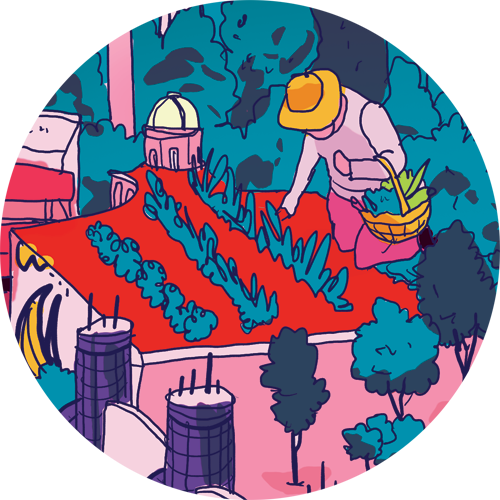TAKE BACK THE EX
FROM NOVEMBER 2018 ISSUE OF WEST END PHOENIX
Exhibition Place is home to the CNE, BMO Field and Medieval Times, but imagine if the 192 acres of publicly owned land were used to their wildest potential. Jessica Wilson asks five urban experts to wave their wands and make the Ex amazing
Connect Exhibition Place and Ontario Place with something I call The Green Arm: a spectacular promenade park arching over Lake Shore Boulevard. Develop these combined lands as a key destination on a net- work of major waterfront parks, adding trails, piers, naturalized islands, waterways and green space.
— Ken Greenberg, principal at Greenberg Consultants and a former director of Urban Design and Architecture for the City of Toronto
Perhaps the wildest thing to do would be literally wild: Grow a forest here – but a dynamic, 21st-century forest, able to host all the things we love. We see the fairs come and go, but the ground has no quality. What if Exhibition Place became a place again? Think about the Horticulture Building carved out of the trees; think about what a 100-acre open forest playground would mean for the contemporary city.
— Marc Ryan, co-founder of Public Work, a Toronto-based urban design and landscape architecture studio
Transform the roof of the Horse Palace into a huge community-based rooftop garden with produce being donated to local food banks. Revitalize the interior as an urban barn, to test innovative technologies, connect students of all levels with hands-on learning opportunities, and produce healthy food and fertilizer.
— Charlie Johnstone, CEO, Royal Agricultural Winter Fair
This could be our Millennium Park, but it looks like a ghost town. We need to get people outside, beyond the fairs, beyond the convention halls year-round. Let’s use the parking lots as animated, ephemeral public spaces; let’s see the buildings as canvases and cover them with art. Create linear parks winding through the site, changing elevations, revealing public art interventions inspired by different cultures and demographics, in both obvious and hidden spaces.
— Zahra Ebrahim, U of T City Studies professor and mentor/adviser at Doblin, a design-led innovation firm
The Ex is built for colossal crowds. How do you make it intimate? How about an autumn Tiny House festival. Reclaimed building materials would be donated from the city’s many demolition sites. Small groups of participants could design and build shelters however they wanted. The groups would consult with each other, sharing tools and ideas, to create an inventive variety of functional, weatherproof houses. Everyone from engineers and architects to the marginalized and under-housed would be invited. Having experience surviving winter in the city with inadequate shelter would be as valuable as construction knowledge. When the village of tiny houses was finished, everyone could visit each house for snacks and hot drinks. The houses would stay up all winter. Any participants who wanted to spend the winter in their house could do so; the rest of the houses would be available as shelter to whoever wanted them.
— Nadia Halim, host of the podcast The Opposite of Lonely




